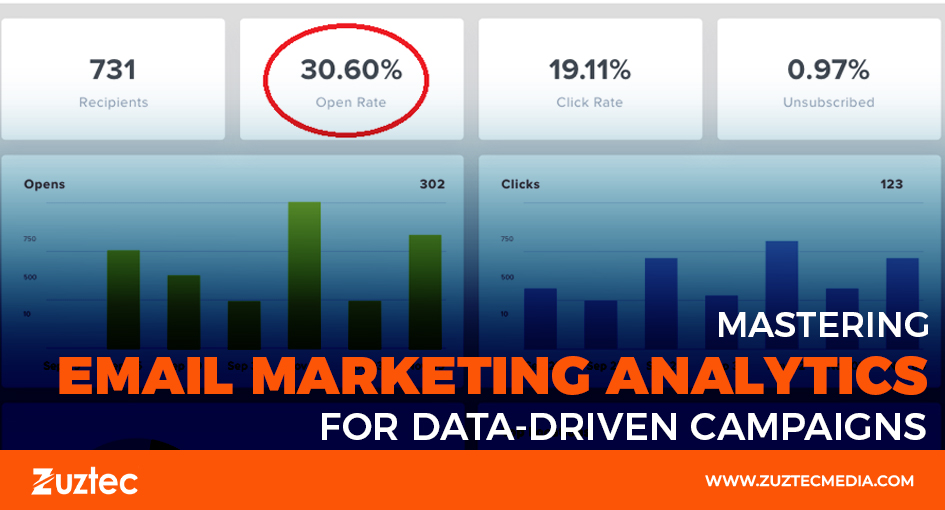
Mastering Email Marketing Analytics For Data-Driven Campaigns
In today’s competitive digital landscape, understanding how your email campaigns perform is essential for driving growth and boosting engagement. By leveraging email marketing analytics, businesses can gain deep insights into subscriber behavior, campaign effectiveness, and overall ROI. These insights help marketers refine their strategies, optimize content, and allocate resources more efficiently. Without a clear analytics framework, it’s easy to rely on guesswork and miss opportunities to connect with your audience in meaningful ways.
Email marketing involves tracking metrics such as open rates, click-through rates, bounce rates, and conversion rates. It also encompasses more advanced dimensions like subscriber lifetime value, engagement heatmaps, and device usage trends. When these data points are analyzed together, they reveal patterns and preferences that can guide personalization, timing, and content decisions. For example, identifying which subject lines drive higher opens or which links attract the most clicks can inform future campaigns and improve performance over time.
Moreover, setting clear goals and benchmarks is a crucial part of any analytics strategy. Without defined targets for your key metrics, it’s difficult to gauge success or identify areas for improvement. Establishing baseline performance levels and regularly comparing them against ongoing results ensures that your efforts stay aligned with business objectives. Whether you aim to increase newsletter subscriptions, drive product sales, or nurture leads, measuring the right analytics metrics keeps your campaigns on track.
Email Marketing Analytics Fundamentals
The foundation of any analytics program is data collection and accuracy. Start by ensuring that your email platform is properly integrated with your website, CRM, and analytics tools. Implement UTM parameters in your email links to capture traffic sources in your web analytics dashboard and maintain consistent naming conventions for campaigns.
Segmentation also plays a vital role in foundational analytics work. By categorizing subscribers based on demographics, behavior, or purchase history, you can track and compare performance across segments. This helps identify which groups respond best to certain offers or messages. A/B testing is another key practice: split your audience to test subject lines, send times, or email designs and use statistical significance to determine winners.
Data hygiene is equally important. Regularly clean your list by removing invalid addresses and monitoring bounce rates. A clean list not only boosts deliverability but also ensures the accuracy of your analytics. Finally, establish a reporting cadence—weekly, monthly, or quarterly—so you can assess trends, spot anomalies, and make timely adjustments.
Measuring Key Performance Metrics
However, open rates alone don’t tell the full story. Click-through rates reveal how engaging your email content and CTAs are, while conversion rates show how well your landing pages convert traffic from your emails. Compare these metrics side by side to identify where users drop off in the funnel.
Bounce rates and unsubscribe rates indicate list health and content relevance. High bounce rates may signal deliverability issues, while spikes in unsubscribes suggest content misalignment with subscriber expectations. Monitoring spam complaint rates is also critical—too many complaints can damage your sender reputation and trigger deliverability problems.
Engagement over time is another valuable metric. Tracking how engagement metrics evolve helps you see the long-term impact of changes in your strategy. Customer lifetime value and revenue per email sent link your campaigns to financial outcomes, providing a clear view of ROI. These advanced metrics are especially useful in mid-funnel and bottom-funnel campaigns where conversions directly drive revenue.
Strategies To Optimize Campaign Results
Turning analytics into action requires a strategic approach. Use insights from your email marketing analytics to personalize content and offers. For example, send tailored product recommendations based on past purchases or send re-engagement campaigns to subscribers who haven’t opened emails in a specific timeframe. Dynamic content blocks within emails can display different messages or images based on subscriber attributes, increasing relevance.
Optimize send times by analyzing subscriber activity patterns. Some segments may engage more on weekends, while others prefer weekday mornings. Scheduling emails when your audience is most active boosts open and click rates. Pay attention to device usage trends; if a significant portion of your audience reads on mobile devices, ensure your templates are mobile-responsive and load quickly.
Use A/B test results to inform future creative, copy, and targeting decisions. Establish clear hypotheses for each test and iterate based on statistically significant outcomes. Mid-campaign adjustments, like tweaking subject lines or adjusting segment criteria, can rescue underperforming sends and maximize overall results.
Leverage predictive analytics to anticipate subscriber behavior. Machine learning models can forecast the optimal frequency for individual subscribers or predict churn risk, allowing you to intervene proactively. Continuously refine your campaigns based on these data-driven insights to maintain momentum and drive sustainable growth.
Conclusion: Building On Insights
Mastering email marketing analytics is an ongoing process that transforms raw data into meaningful improvements. By focusing on robust data collection, tracking essential and advanced metrics, leveraging specialized tools, and applying strategic optimizations, you create a feedback loop that continually enhances your campaigns. When you integrate email marketing into every stage of your planning and execution, you not only improve performance metrics but also foster deeper connections with your subscribers and maximize your marketing ROI.

